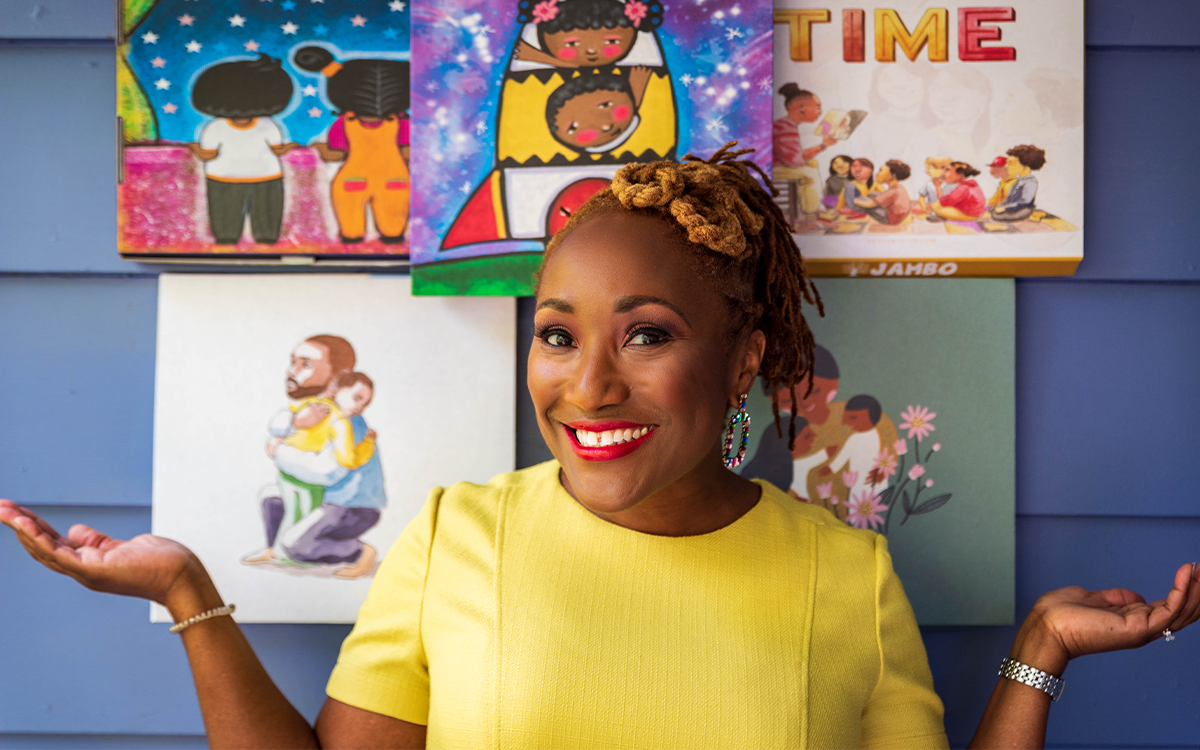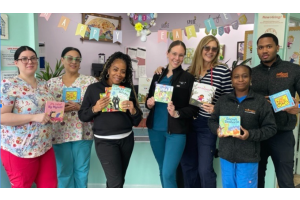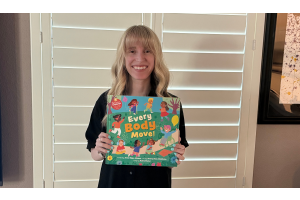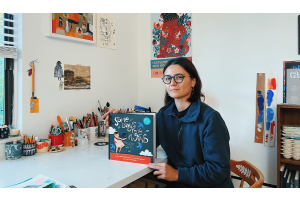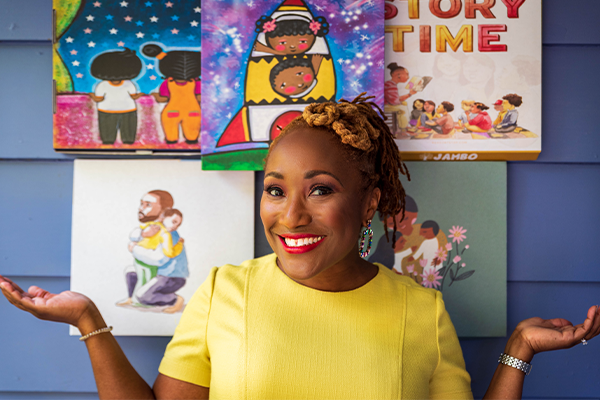
Below is a guest post by Mijha Godfrey, a former affordable housing developer, lawyer and founder of Jambo Books. Jambo, which means both “hello” and “welcome” in Swahili, is a book subscription service for children aged 0–13 where all the books feature lead characters who are children of . The stories in Jambo Books focus on the beauty of childhood, the joys of friendship and family, the thrill of new adventures—the wonderful tapestry that is the life of a child of .
When I was a child, beauty was white or white-proximate.
When Vanessa Williams won the Miss America pageant in 1984 my mom and grandmother cried. Right there in the living room, they cried and hugged and celebrated. When The Cosby Show started in the same year, it was must-see-TV in my house. Without DVRs or streaming, we had to be in place on time at 8pm Thursday nights to watch our family. I always sprawled out on my stomach under the coffee table, my grandmother sat in her chair, and my mom sat on the couch. Watching The Cosby Show planted the idea that I might want to go to Princeton, like the eldest Huxtable daughter, Sandra.
Positive representation of Black people in the media was so rare that when we came across it, we ran to it like lost souls in a desert run to an oasis. Of course, we had Jet, Essence and Ebony, the triumvirate of Black mass media for decades. But there is something about stories. Whether they are told on a screen or in books, stories convey a society’s sense of itself—what is acceptable and unacceptable, real and impossible, normal and aberrant.
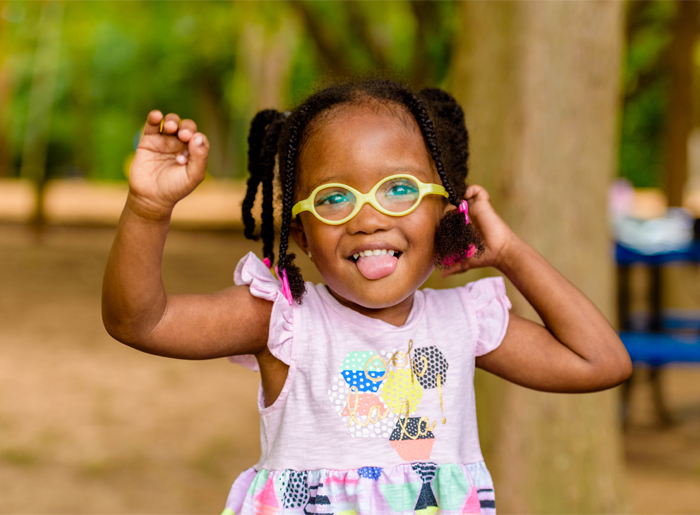
What was and is still missing from children’s literature are depictions of children of as radically normal. Radical, not in the sense of insurrection, but radical meaning essential, foundational, basic, and fundamental. People of are often represented in the media as the personification of a stereotype or a paragon of history. As recently as 2018, 1% of children books starred a Native American character, 5% starred a Hispanic character, 10% featured a Black character, and 7% featured an Asian Pacific character. Animals and non-human characters got a 27% share of children’s book characters and the rest, 50% of the characters in children’s books, were white.
“ breaks the automatic association between Black and poverty and dysfunction, Hispanics and illegal immigration, Muslims and violence.”
is as much about breaking as about fixing. breaks the automatic association between Black and poverty and dysfunction, Hispanics and illegal immigration, Muslims and violence. When people of do show up in stories, they are often parodies—a convenience store owner with a funny accent, a super smart whiz kid with overbearing parents and no interpersonal skills, or a crime-addicted super thug. They don’t get to be layered, complex or thoughtful and they are rarely depicted doing regular, everyday things. Without disowning one iota of the cultural and historical background that informs their lives, people of are still radically normal.
My daughter is in Girls on the Run. During their first virtual get-to-know-you session, the girls were asked to name three things that make them unique. One girl started listing her attributes, “I’m Black….” One of the coaches, a Black woman, stopped her, exclaiming, “That’s not unique! I’m Black too!” My heart just soared. She was telling that little Black girl living in a predominantly white town, “Being Black is NORMAL. There may not be a lot of Black people in your class at school, but you need to know there are a lot of us.”
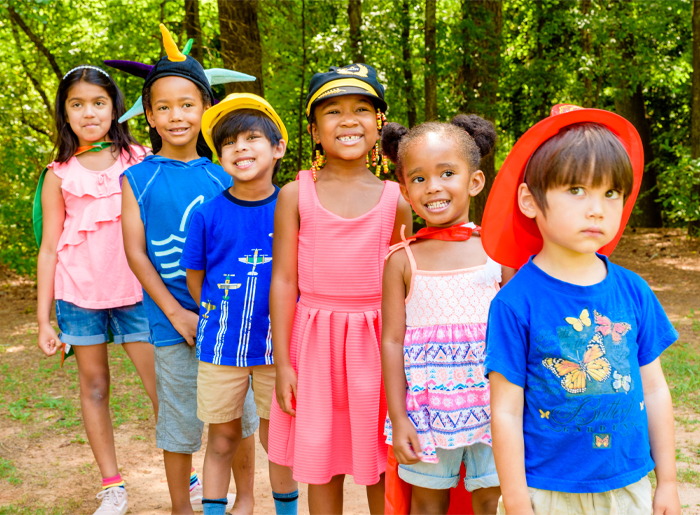
It’s important to have media that reflects the truth of the lives of people of . Ingrained patterns of segregation have separated Americans from each other based on racial and ethnic lines. People of have been caricatured and maligned in the popular imagination for so long that the lack of real interaction and the avalanche of negative stereotypes makes it incredibly difficult to raise children who see people who are not like them as normal.
“Without disowning one iota of the cultural and historical background that informs their lives, people of are still radically normal.”
I want my children to have access to a range of books—books that tell stories about Black men and women who overcame mighty odds to achieve justice and acclaim, and books about Black kids who want pets, love their grandparents and believe in fairies. I want my children to know the breadth and richness of history as well as the comforting ordinariness of their routines. I want stories that show Hispanic kids having a lemonade stand, facing sibling rivalry, and experiencing their first crush. Sure, the immigrant experience is important and so is Día de los Muertos, but the life of a Hispanic kid is so much more. I want stories where Muslim kids can encounter themselves in their fullness. Eid and Ramadan are deeply important religious and cultural touchstones, but we also want to read about Muslim kids who resist going to bed early and may be afraid of the dark.
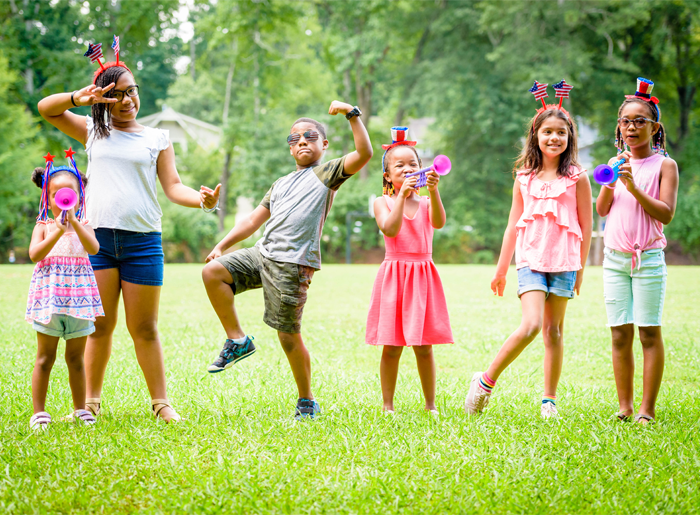
As the stories evolve for older kids, I want books that turn the canon on its head. Girls and people of aren’t just tools to move the plot along, they are the characters through which we can interpret universal themes and principles. I want to cheer with their triumphs and cringe with their fears. A 7-year-old Muslim boy whose family has roots in Iran can illuminate themes about the universal human experience. I look at a Black girl with giant afro puffs and wonder why wouldn’t a boy be able to see her humanity and connect to her experience? These are the books that I want in my home library so my daughter can return to them time and again. She can sleep with them tucked under her pillow; she can pour over them at mealtimes without fear of messing them up and she can rediscover them months or even years after sliding them on her bookshelf.
“These are the books that I want in my home library so my daughter can return to them time and again.”
Ruby was the first Barefoot character I met. My family adores Ruby. Ruby’s Sleepover, Ruby’s School Walk and Ruby’s Baby Brother have accompanied us through the years and many life changes. My oldest daughter is now a big sister times two and is old enough to walk to school by herself. Ruby’s bravery and outsized imagination is a source of inspiration.
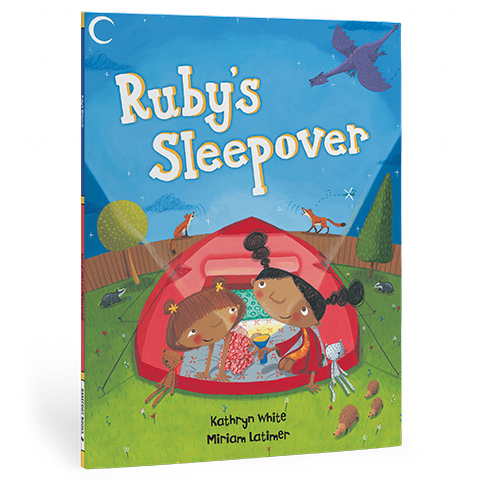
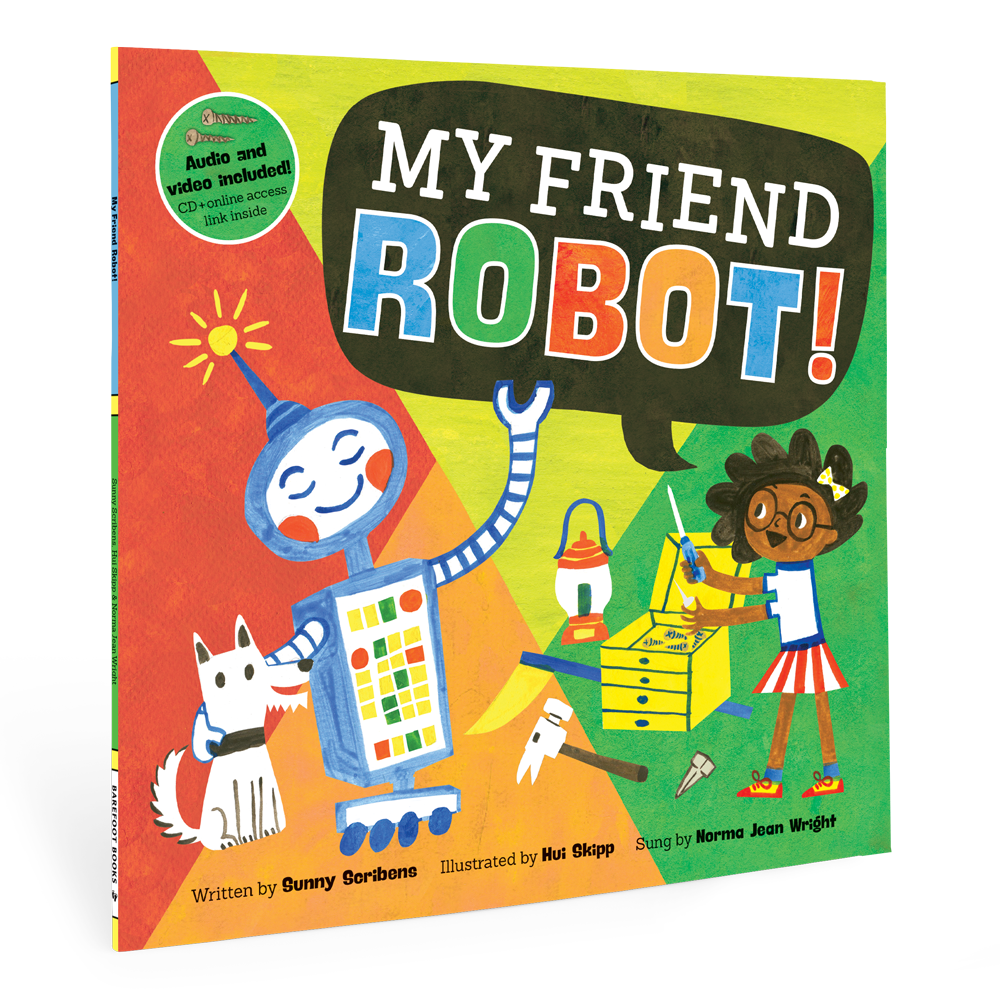
Jambo Books has shared Shopping with Dad, Dr. Potts, My Pets Have Spots, Space Song Rocket Ride and My Friend Robot! with our members. All of these books show kids of being kids, causing havoc at the grocery store with dad, bringing a menagerie of sick pets to the veterinarian, exploring outer space and building robots. Yes, our children should have a strong sense of history and culture, but they should also have a strong sense of fun, of wonder and of joy. Anyone encountering a child should see and comprehend that person as a child first. No one meeting my daughters should expect to see little Harriet Tubmans. Even Harriet Tubman was born Araminta Ross.
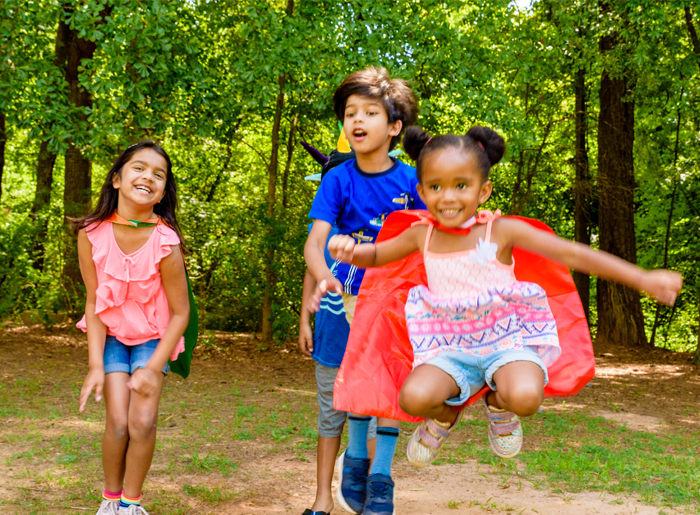
My dream for my girls is the same as most parents’ dreams for their children: that they will be able to reach their full potential. The ability of so many people of to meet their full potential is hobbled by useless stereotypes and rotten systems that block our ability to know and appreciate each other as we are.
“Anyone encountering a child should see and comprehend that person as a child first.”
By exposure to books with vibrant characters from marginalized communities, we will create adults who expect diversity and crave input from all people. Perhaps reading books that present children of as radically normal will make the reader less likely to ask a person of where he or she is “really” from. A hiring manager who once read books about Tameika and Anul will not reflexively throw away resumes with unfamiliar names at the top. We envision a world where children learn early from their families and communities that people are individuals who deserve respect and consideration because our shared humanity makes us both powerful and incredibly fragile.
An icebreaker question we ask here at Jambo Book Club is, “How old were you when you first read a fiction book whose main character looked like you?” How wonderful if children could answer, “Gosh, I don’t remember. I’ve always had books that starred kids like me and lots of other people too.” Being surrounded by stories that present different peoples’ beauty, lifestyles, and religions as ordinary and unexceptional—that is radically normal.



